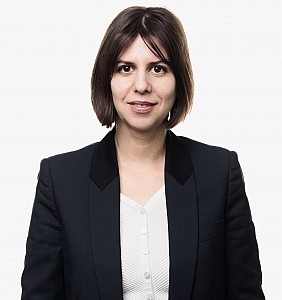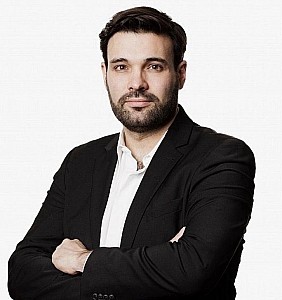Track One: When “Patent Pending” Is Too Slow

One of the major frustrations in the patent system is the slowness of the grant procedure. In the realm of intellectual property, speed can be a decisive advantage. Many want to be able to stop their competitors immediately — not in X years. To initiate an infringement procedure, however, a granted patent is almost essential, but in the meantime, a competitor can already take a significant chunk of the market and build a strong position for the future. A granted patent is also often a major plus when it comes to fundraising, while in commercial terms, the label "patented" simply carries more weight than "patent pending".
At the European Patent Office (EPO), reducing this timeline has been one of the major challenges in recent years. Significant progress has been made, and examiners are increasingly thinking proactively with applicants. Nevertheless, bureaucracy is still what it is, and a grant within 2 years of filing is still considered very fast.
In addition, there are several practical measures in Europe that can speed up the procedure, such as PACE, PPH, skipping certain procedural steps, and direct communication with examiners. These actions are available without official fees.
The U.S. Patent and Trademark Office (USPTO) also acknowledged "the need for speed" and in 2011 introduced the Track One Prioritized Examination Program, or “Track One,” a program that allows applicants to have their patent application processed more quickly. If an applicant urgently needs or benefits from a granted patent — particularly in rapidly evolving technical fields where products have short lifecycles — Track One is without a doubt an option worth considering, albeit with some nuances.
What is Track One
Track One is an accelerated procedure for the examination of utility and plant patent applications (which in Europe generally fall under the umbrella of patent applications, and in some countries also utility models), but not design patents. When a request for Track One is accepted, the USPTO commits to issuing a final decision — either a grant or final rejection — within 12 months. And even in the case of rejection, it is still possible to appeal.
In practice, this often happens even faster: in 2023, the average processing time was approximately 5 months, which is significantly shorter than the standard average of 25 months for regular applications.
Requirements for Track One
Not every patent application qualifies for Track One. The main conditions are:
- A maximum of four independent claims
- A maximum of 30 total claims
- No multiple dependent claims
- Payment of the required official fees
- The Track One request must be submitted at the time of filing — so make up your mind!
Finally, the number of Track One applications per fiscal year is limited to 15,000. So, the request must be made in time to fall within the quota. You can track the number of applications via the USPTO Track One Dashboard.
Benefits of Track OneThe main reason to choose Track One is, of course, speed. In some sectors — such as biotech, software, or start-ups seeking investors — it is crucial to obtain a granted patent quickly. In other industries, product lifecycles are so short that rapid protection is essential; otherwise, a patent may be granted for product version 1.0 when version 4.0 has already replaced the earlier versions.
In addition, Track One applications have a higher grant rate than regular applications. While the USPTO average is around 76%, Track One grant rates hover between 85% and 90%. In other words, not only does the grant come faster, but also with higher certainty.
Finally, the file history (or “file wrapper”) is generally shorter and clearer, as Track One applications are often granted without multiple Office Actions, which can include applicant concessions that might come back to haunt them later. This is favorable in subsequent proceedings, such as licensing negotiations or lawsuits, where earlier file statements can have significant impact.
Drawbacks and Caveats
Track One requires payment of an additional fee, dependent on the size of the applicant, on top of regular filing costs. This makes the option expensive for solo inventors or academic institutions. In practice, we see that mainly large companies make use of Track One. For example, in 2020, Google, Capital One, Samsung, IBM, and LG Electronics accounted for nearly two-thirds of all Track One applications.
There is also growing concern about the quality of examination within Track One. Some observers report that "first action allowance" (immediate grant without prior substantive rejection) happens too often. That is rare in the regular process and raises questions about the depth of the examination — a higher grant rate and faster procedure are great, but not if it leads to unjustified patents or unenforceable rights. Moreover, this offers an easy route for Patent Trolls and Non-Practicing Entities (NPEs), who can obtain “cheap” patents to target third parties, banking on those third parties’ hesitation or legal costs to challenge the patents in court.
Lastly, we are seeing a growing number of Track One applications in portfolios already involved in litigation. The Track One program gives companies the chance to quickly obtain new claims before a negative judgment in a lawsuit or IPR procedure.
What Does This Mean for European Applicants?
For European companies and inventors seeking fast protection in the U.S., Track One can be attractive — if the additional costs are justified. This is especially the case when:
- A granted patent is urgently needed for funding, partnerships, or market access;
- There is a risk of competitors quickly launching similar technologies;
- A clear, well-prepared application is available with minimal chance of substantive objections.
But be aware: the benefits of Track One diminish as the program becomes more popular. Also, the extra cost is significant, especially for smaller players. And of course, concerns remain about the quality of examination in highly accelerated procedures, which can impact the long-term value of the patent and bring legal risks.
Conclusion
Track One is a valuable tool within U.S. patent strategy but requires critical consideration. It is particularly worth considering if:
- there is strong commercial urgency,
- the application is well-prepared (with clear, defensible claims),
- and the additional cost is outweighed by the speed gained.
In many other cases, a regular application — or even a PPH request based on EPO examination — remains at least as strategic, often without the same pressure on substantive quality.
Want to know if Track One is right for your international patent strategy? Feel free to get in touch — we’re happy to help you make the right decision.
Do you have a question?
We would be happy to assist you.
Make an appointment with one of our experts.
Rest assured, you're not alone.
Feel free to browse through the FAQ and don't hesitate to
contact us if you still have any doubts.




